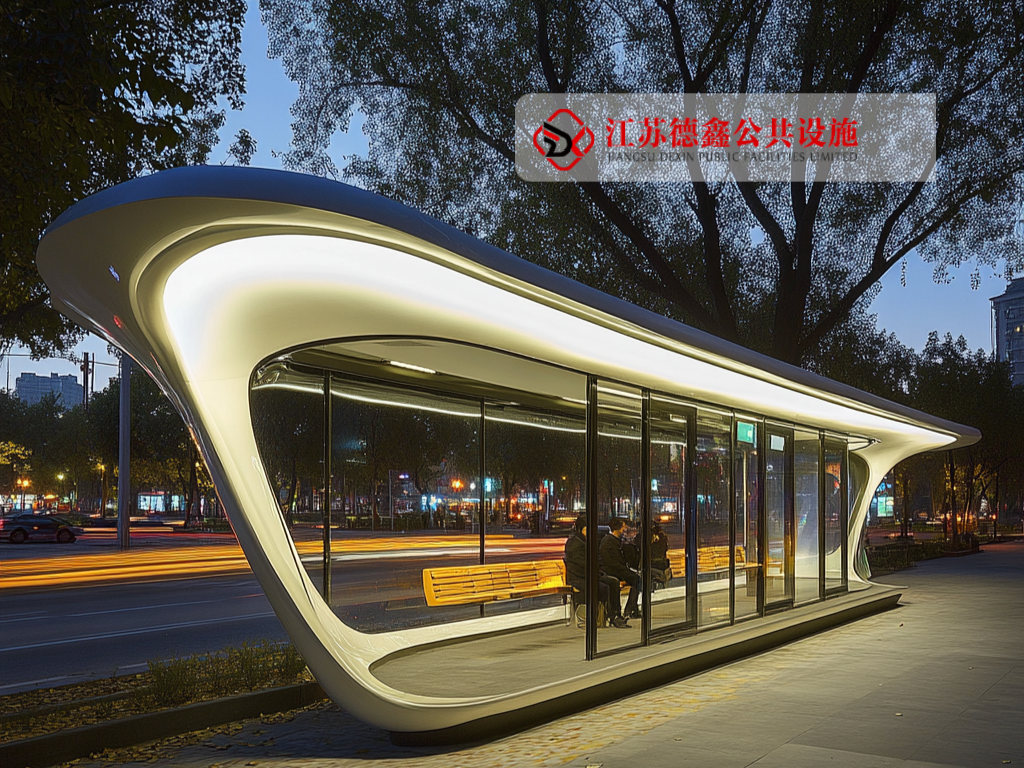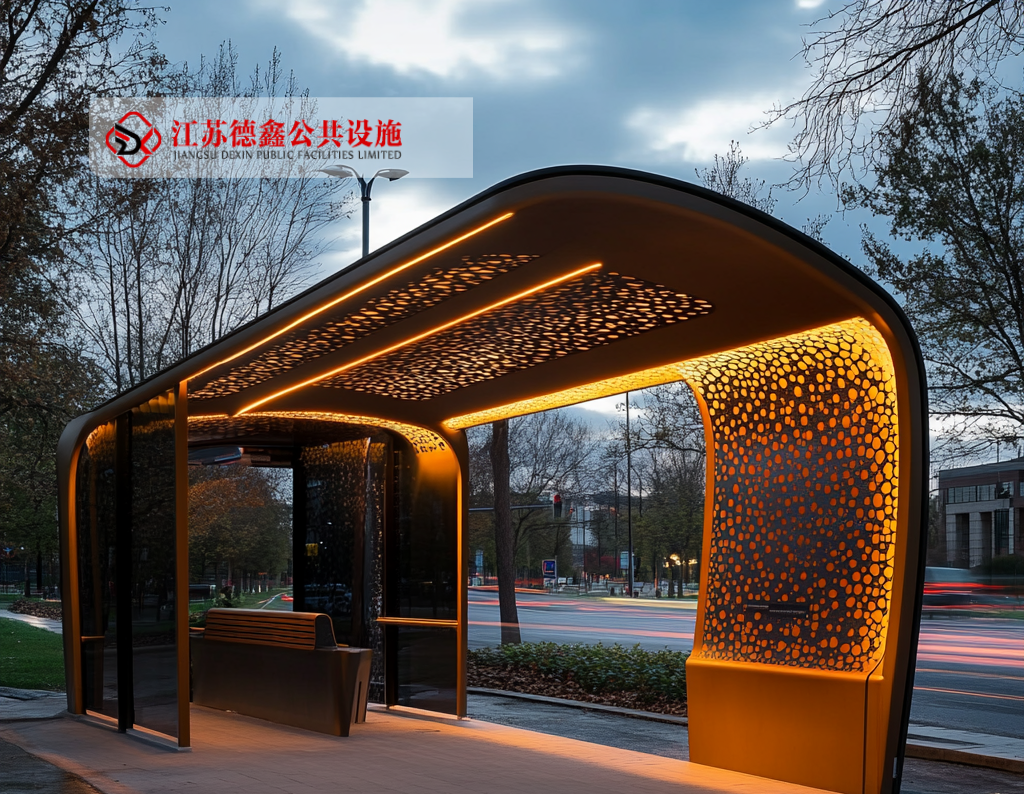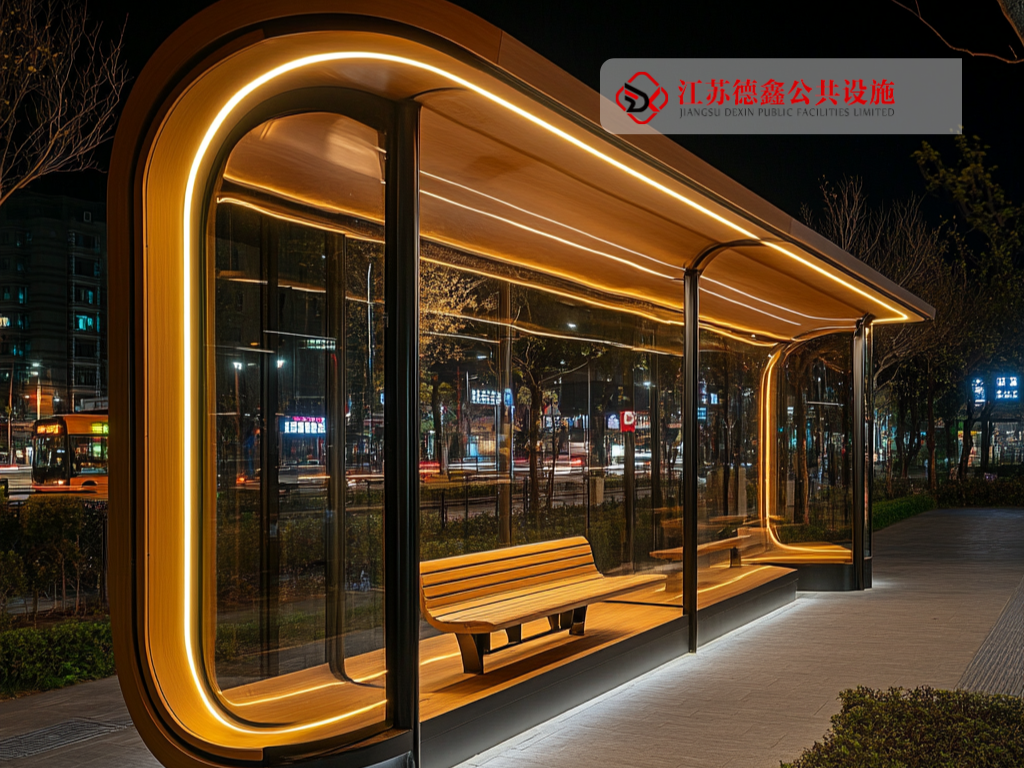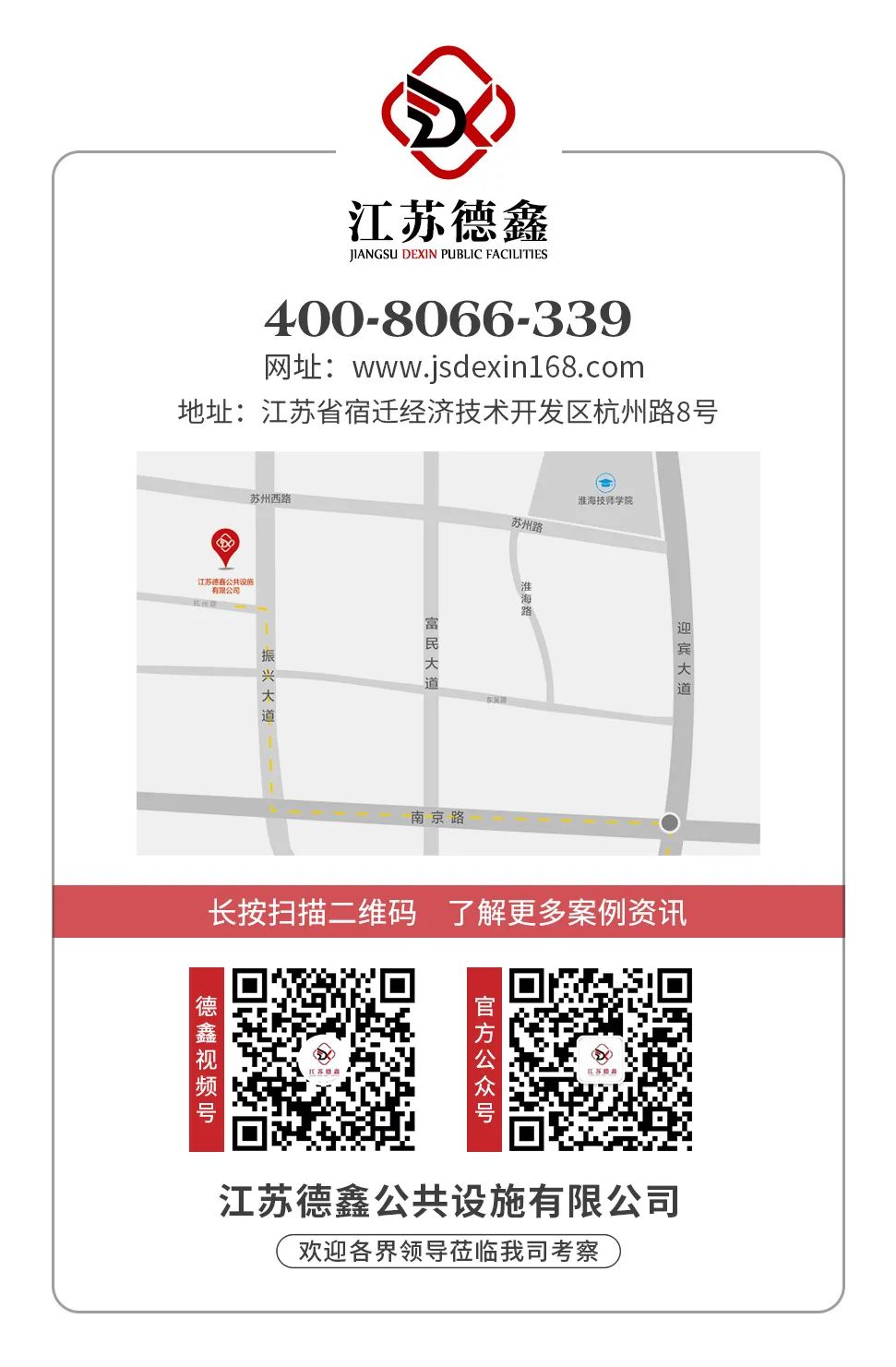In the wave of smart city construction, the intelligent upgrade of public transportation systems has become an important measure of urban governance. As a leading provider of smart transportation solutions in China, Jiangsu Dexin Public Facilities Co., Ltd. is quietly transforming the urban mobility ecosystem with its innovative smart bus shelters driven by “IoT + New Energy”. 1. Technology Empowering Travel ExperienceThe smart interactive system installed in Dexin’s bus shelters features a 65-inch full-color touchscreen that displays real-time information such as bus arrival times, route planning, and transfer suggestions. Based on BeiDou satellite positioning and 5G communication technology, the vehicle location error is controlled within 5 meters, improving accuracy by 60% compared to traditional bus stops. In case of emergencies, passengers can simply press the “one-button call” button, and the system will automatically send a GPS-located distress message to the dispatch center, achieving a closed-loop emergency response within 3 minutes.The deep application of new energy technology turns the bus shelter into a green energy node. The integrated photovoltaic glass curtain wall generates an average of 15 kWh per day, and with the energy storage system, it can meet a continuous power supply demand for 72 hours. According to third-party testing, a single unit can reduce carbon dioxide emissions by over 4 tons annually, equivalent to planting a 200 square meter forest. While ensuring basic lighting, it also provides clean energy for electronic screens, charging piles, environmental sensors, and other devices.
1. Technology Empowering Travel ExperienceThe smart interactive system installed in Dexin’s bus shelters features a 65-inch full-color touchscreen that displays real-time information such as bus arrival times, route planning, and transfer suggestions. Based on BeiDou satellite positioning and 5G communication technology, the vehicle location error is controlled within 5 meters, improving accuracy by 60% compared to traditional bus stops. In case of emergencies, passengers can simply press the “one-button call” button, and the system will automatically send a GPS-located distress message to the dispatch center, achieving a closed-loop emergency response within 3 minutes.The deep application of new energy technology turns the bus shelter into a green energy node. The integrated photovoltaic glass curtain wall generates an average of 15 kWh per day, and with the energy storage system, it can meet a continuous power supply demand for 72 hours. According to third-party testing, a single unit can reduce carbon dioxide emissions by over 4 tons annually, equivalent to planting a 200 square meter forest. While ensuring basic lighting, it also provides clean energy for electronic screens, charging piles, environmental sensors, and other devices. 2. Data-Driven Urban GovernanceBy deploying multimodal perception devices at the bus shelters, the system can collect real-time data on passenger flow, environmental parameters, equipment status, and more than 20 types of data. Combined with AI algorithms, it can generate intelligent analysis reports such as bus route optimization suggestions, peak period warnings, and equipment failure predictions. Data from the pilot project in Suzhou shows that the system has improved bus punctuality by 18% and increased dispatch personnel efficiency by 35%.In terms of enhancing citizen experience, the free dual-band WiFi hotspot supports 50 simultaneous connections with a download speed of up to 100 Mbps. The equipped USB charging interfaces serve over 200 people daily, addressing the battery life issues of travel devices. The specially designed smart seats can automatically adjust the heating function based on the ambient temperature, maintaining a comfortable feel within the range of -10℃ to 40℃.3. Building the Future Mobility EcosystemIn response to the opportunities presented by the commercialization of 5G and the development of artificial intelligence, Dexin has initiated the research and development of the next generation of smart bus shelters. The plan is to implement vehicle-road collaboration systems by 2026 to prioritize bus traffic control. Additionally, a passenger flow prediction model is being developed to forecast peak periods 30 minutes in advance, providing decision support for dynamically adjusting departure frequencies.In the future, digital twin technology will be used to create a digital sandbox for urban public transport, achieving full visualization management from bus shelters to road networks. Under the guidance of carbon peak targets, there are plans to deploy 100,000 new energy smart bus shelters by 2028, reducing carbon emissions by over 400,000 tons annually.
2. Data-Driven Urban GovernanceBy deploying multimodal perception devices at the bus shelters, the system can collect real-time data on passenger flow, environmental parameters, equipment status, and more than 20 types of data. Combined with AI algorithms, it can generate intelligent analysis reports such as bus route optimization suggestions, peak period warnings, and equipment failure predictions. Data from the pilot project in Suzhou shows that the system has improved bus punctuality by 18% and increased dispatch personnel efficiency by 35%.In terms of enhancing citizen experience, the free dual-band WiFi hotspot supports 50 simultaneous connections with a download speed of up to 100 Mbps. The equipped USB charging interfaces serve over 200 people daily, addressing the battery life issues of travel devices. The specially designed smart seats can automatically adjust the heating function based on the ambient temperature, maintaining a comfortable feel within the range of -10℃ to 40℃.3. Building the Future Mobility EcosystemIn response to the opportunities presented by the commercialization of 5G and the development of artificial intelligence, Dexin has initiated the research and development of the next generation of smart bus shelters. The plan is to implement vehicle-road collaboration systems by 2026 to prioritize bus traffic control. Additionally, a passenger flow prediction model is being developed to forecast peak periods 30 minutes in advance, providing decision support for dynamically adjusting departure frequencies.In the future, digital twin technology will be used to create a digital sandbox for urban public transport, achieving full visualization management from bus shelters to road networks. Under the guidance of carbon peak targets, there are plans to deploy 100,000 new energy smart bus shelters by 2028, reducing carbon emissions by over 400,000 tons annually. From “waiting for the bus” to “enjoying the bus,” Jiangsu Dexin’s innovative practices not only reshape the service model of public transportation but also build a perceptive network for smart cities through technology integration. With the arrival of the era of the Internet of Everything, these intelligent terminals standing on the streets are becoming important support points for the digital transformation of cities, painting a brighter picture for future mobility that is smarter, greener, and more human-centered.
From “waiting for the bus” to “enjoying the bus,” Jiangsu Dexin’s innovative practices not only reshape the service model of public transportation but also build a perceptive network for smart cities through technology integration. With the arrival of the era of the Internet of Everything, these intelligent terminals standing on the streets are becoming important support points for the digital transformation of cities, painting a brighter picture for future mobility that is smarter, greener, and more human-centered.